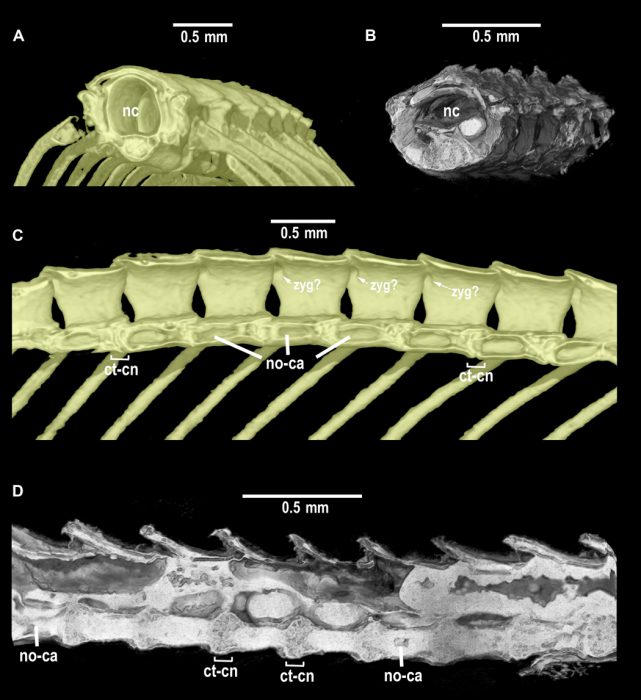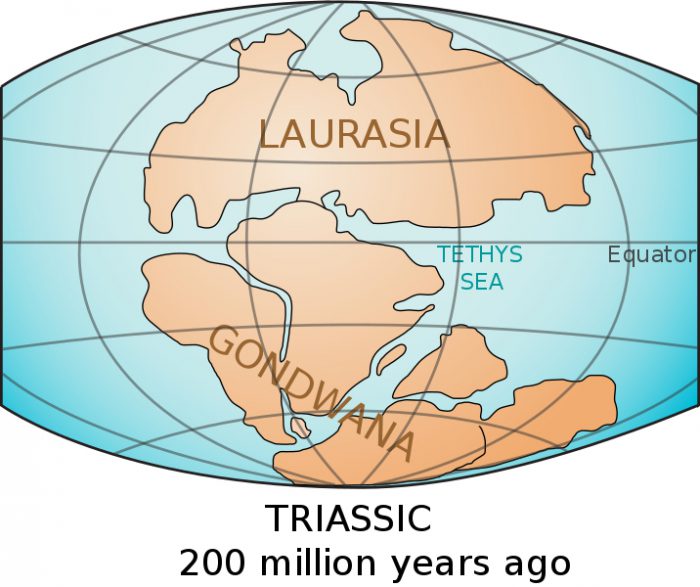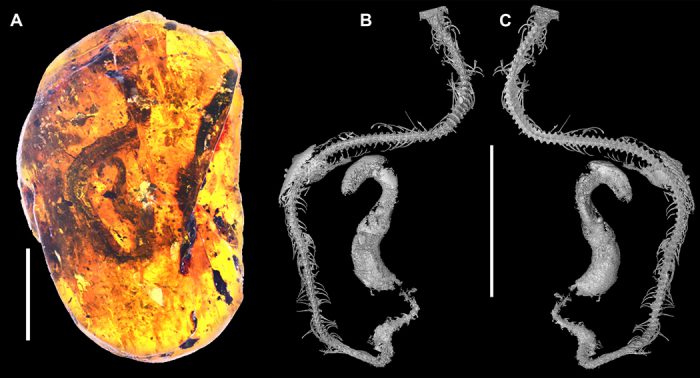A recent discovery in the southeast Asian country of Myanmar may be tiny, but it is still making a big impact. Trapped within the amber is a fossil of Xiaophis myanmarensis, a prehistoric snake that existed during the Age of the Dinosaurs.
At 99 million years old, it comes from the mid-Cretaceous period—a time that featured some of the most famous dinosaurs of all time, such as T. rex and Triceratops. This incredible fossil is the oldest baby snake fossil ever found.
Delicate specimen

X-rays of the tiny vertebrae of the snake fossil. (Science Advances)
One look at the fossil itself and it's easy to understand why the fossil is so rare. It is only 47.5 millimetres (1.8 inches) long. That's about the size of a large paperclip. Meanwhile, its vertebrae—the pieces of its backbone—are just 0.5 mm (0.02 inches) wide. That's one tiny, fragile skeleton!
Fortunately, it was preserved in amber. Amber is hardened tree sap. Many millions of years ago, sap flowed over this baby snake, trapping it. The amber kept the snake fully intact as it waited to be found. (The skeleton is missing the snake's skull, but is otherwise essentially complete!)
More to find?

Laurasia and Gondwana were two supercontinents on Earth that first formed around 200 million years ago. Eventually, the continents split up and moved further into the way the Earth looks today. (LennyWikidata/Wikimedia Commons)
What does this discovery change for scientists who study this era? Though the fossil is very difficult to examine with the naked eye, x-ray scans prove that it is similar to other snake fossils found from the late Cretaceous period in what was once Gondwana. Gondwana was an ancient supercontinent that contained the land that became South America, Africa, India, Antarctica, and Australia. What does that all mean?
When Gondwana existed, there was a second supercontinent called Laurasia that contained modern Asia, Europe, and North America. Now Myanmar (where this fossil was found) is a part of Asia, but it is also close to India, which drifted into mainland Asia millions of years ago and gave us the continent shape that we know today. Does the fact that this snake is similar to other prehistoric Gondwana snakes mean Myanmar—like India— used to be separate from modern Asia? Or is there another explanation?
That's just one of the many questions that this find poses to scientists. The good news? With so much ancient amber still to discover across Asia and other parts of the world, you can bet that the search is only just beginning!
Examine the fossil for yourself in this video.
 The piece of amber and an x-ray scan of the fossil inside. (Science Advances)
The piece of amber and an x-ray scan of the fossil inside. (Science Advances)









